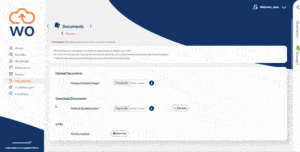In the current situation with COVID-19, it can be tricky to manage the transition from onboarding processes to induction as seamlessly as we would like to, and managing it in the “new normal” will take a bit of adaptation as HR teams are used to making a lot of this process a face to face interaction with new hires.
So how do you start to manage this transition when you cannot rely on your tried and tested processes? The best place to start is to use the tools that you currently have available to simulate the process that you usually follow, especially where you have found that the current process works well. There are many systems out there that you could use, some of which are free, and some are paid systems that you may already have access to.
For example, is a team lunch a normal first day experience for a new hire? Then why not have a virtual lunch instead? (This actually works well as a general practice for teams at the moment too.) Have people share their lunch choices and encourage non work related conversations to start building team bonds.
You could also get heads of department onto a video call using one of the many tools like Skype, Zoom, Hangouts or Teams to discuss their section of the business and how they fit into the company overall. This helps you integrate someone new with the whole company, not just with their teammates.
Another step to consider would be to make a really clear plan of what the first week looks like. Many companies do this already but it often comes together late in the day or is done ad hoc when people are in the office. If you can have something prepared to share with the new starter it will make them feel expected and wanted. Avoid filling up all of their days for the sake of it though, give them projects that they can work on in the gaps and allow time to digest the information they have received. You don’t want them to feel micromanaged from day one.
Try as much as possible to treat the first day and first week as you would normally, share your presentations with people, educate them on how to effectively work remotely, have virtual tea breaks with other team members; bring as much of the social aspect into the process as you can so that they really feel like a part of the team.
Integration is such a key aspect of the process at this stage so don’t let it drop off just because people are out of the office and working remotely. If anything try to do more than you usually would to keep social aspects going. For example, we have had a virtual end of week drinks event complete with a good old quiz each week in lockdown. Things like that can really help people engage with the group and get involved.
Finally, you can look at getting all of the paperwork done and dusted before someone starts. They probably have more time to do it now than they used to so it’s a good time to move that from a day one or induction process to an onboarding step as long as you have the ability to manage that remotely, that way it is well out of the way before the exciting stuff kicks in.




